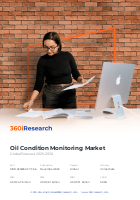
Oil Condition Monitoring Market by Offering (Instrument, Services, Software), Oil Type (Bio Based Oil, Mineral Oil, Synthetic Oil), Monitoring Parameter, Application, End User Industry - Global Forecast 2025-2030
SKU
MRR-3E32260F7FE6
Region
Global
Publication Date
December 2025
Delivery
Immediate
2024
USD 2.47 billion
2025
USD 2.61 billion
2030
USD 3.51 billion
CAGR
5.99%

Download a Free PDF
Get a sneak peek into the valuable insights and in-depth analysis featured in our comprehensive oil condition monitoring market report. Download now to stay ahead in the industry! Need more tailored information? Ketan is here to help you find exactly what you need.



